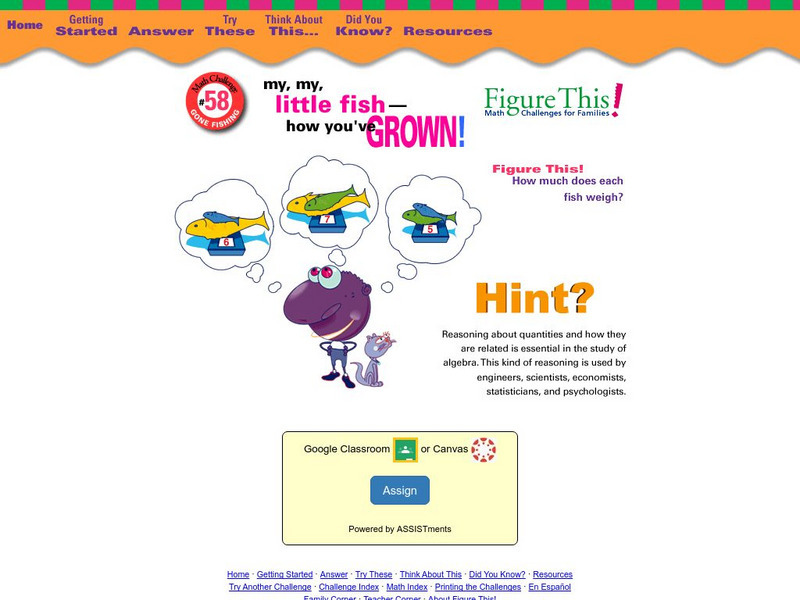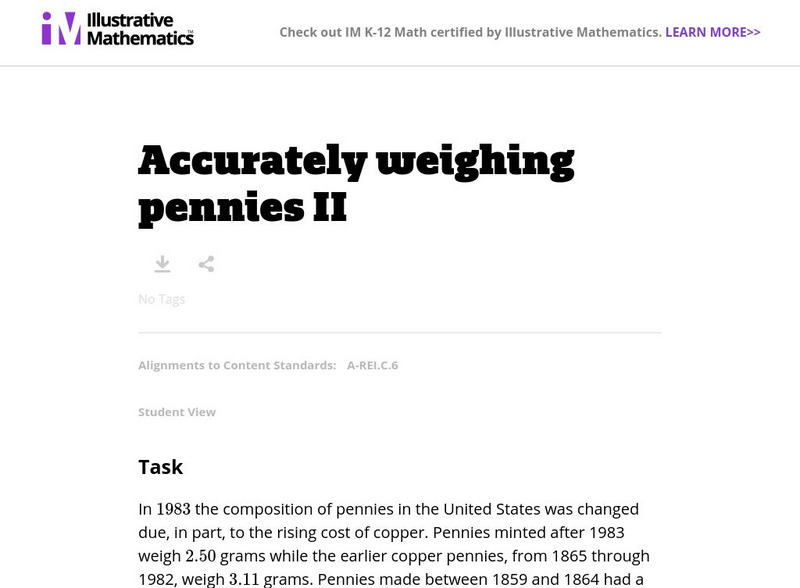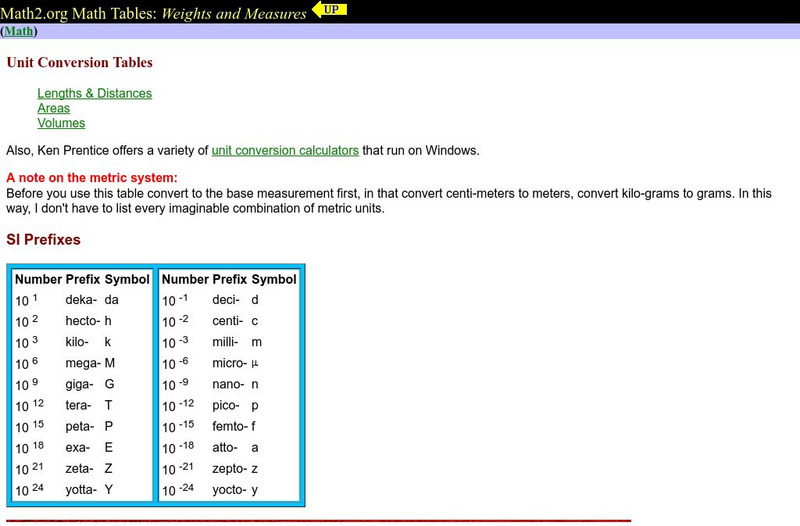ClassFlow
Class Flow: Weight
[Free Registration/Login Required] This flipchart can be used in Everyday Math for third grade. It involves metric and U.S. Customary weights and measuring different objects.
Ducksters
Ducksters: Kids Math: Units of Measurement Glossary and Terms
Math glossary and terms on units of measurement for kids. Learn the definitions used in this mathematics subject such as time, temperature, length, and distance.
Math Is Fun
Math Is Fun: Metric Mass (Weight)
Grams, kilograms and tonnes are explained, and real life examples are given for each.
Illustrative Mathematics
Illustrative Mathematics: Longer and Heavier? Shorter and Heavier?
Students will compare the length and weight of several pairs of objects to learn that weight and length are separate measurable attributes, and not always related.
Other
Online Conversion
Conversion calculators galore! Convert just about anything from one measureable unit into another measureable unit here with over two dozen calculators. Each of the links is specific to a measureable quantity. Some examples include...
National Council of Teachers of Mathematics
Nctm: Figure This: Body Mass What's Your Index? (Pdf)
If you like tackling formulas, then this math challenge is for you. See if you can calculate Helix's BMI (body mass index) and find out if his health is at risk. A one page NCTM Math Challenges for Families activity that engages learners...
National Council of Teachers of Mathematics
Nctm: Figure This: Gone Fishing (Pdf)
Use your algebraic reasoning to solve this math challenge that explores the relationship between quantities and weights. Try this math challenge from the NCTM Math Challenges for Families series. Also, discover how mastering this skill...
Math Is Fun
Math Is Fun: Us Standard Mass (Weight)
Students learn about standard units of mass. Topics include ounce, pound, and ton. Practice problems are included to check for comprehension of the concept.
Illustrative Mathematics
Illustrative Mathematics: A rei.c.6: Accurately Weighing Pennies Ii
This illustrated math lesson shows how important levels of accuracy in measurement are. The answer can be different since a scale only accurately weighs to the nearest tenth of a gram instead of to the nearest hundredth of a gram. Aligns...
Better Lesson
Better Lesson: Wow! That's Heavy!
Kindergarteners grasp the basic concepts of measurement quickly and this lesson provides a fun experience learning about weight.
Math2
Math2.org: Weights and Measures
This resource provides information on weights and measures, including unit conversion tables.
Better Lesson
Better Lesson: Math Trash
A lesson where students collect trash, sort, and record the mass in grams. They will use their knowledge of numbers to figure out what category of trash had the most. The biggest idea of the lesson is that students will be more likely to...
PBS
Pbs Learning Media: Metric System Basics
Assess height, weight, and volume using metric measurements. This interactive exercise touches on place value and focuses on the prefixes associated with metric measurement.
PBS
Pbs: Super Bear: Comparing Mass
Think about the relationships between weight and size of similar objects. This interactive exercise focuses on using critical thinking skills and estimation skills to predict how many mini and regular gummy bears it takes to have the...
Alabama Learning Exchange
Alex: Souper Scooper
This hands-on, inquiry based lesson is an extension of the AMSTI Science Module, Solids and Liquids. Young scholars use nonstandard units to measure beans in a soup mix. Students predict how many beans will be in a scoop. Young scholars...
Illustrative Mathematics
Illustrative Mathematics: G Mg How Many Leaves on a Tree? (Version 2)
In this task, students must estimate the number of leaves on a large tree, taking into account various complex factors such as the area shaded by the tree, the area of irregularly shaped leaves, the uneven distribution of leaves, the...
Illustrative Mathematics
Illustrative Mathematics: Which Weighs More? Which Weighs Less?
Students will use a block to compare with other objects to decide which is heavier/lighter. They will fill in a chart by drawing a picture of it under "Heavier" or "Lighter" depending which applies.












